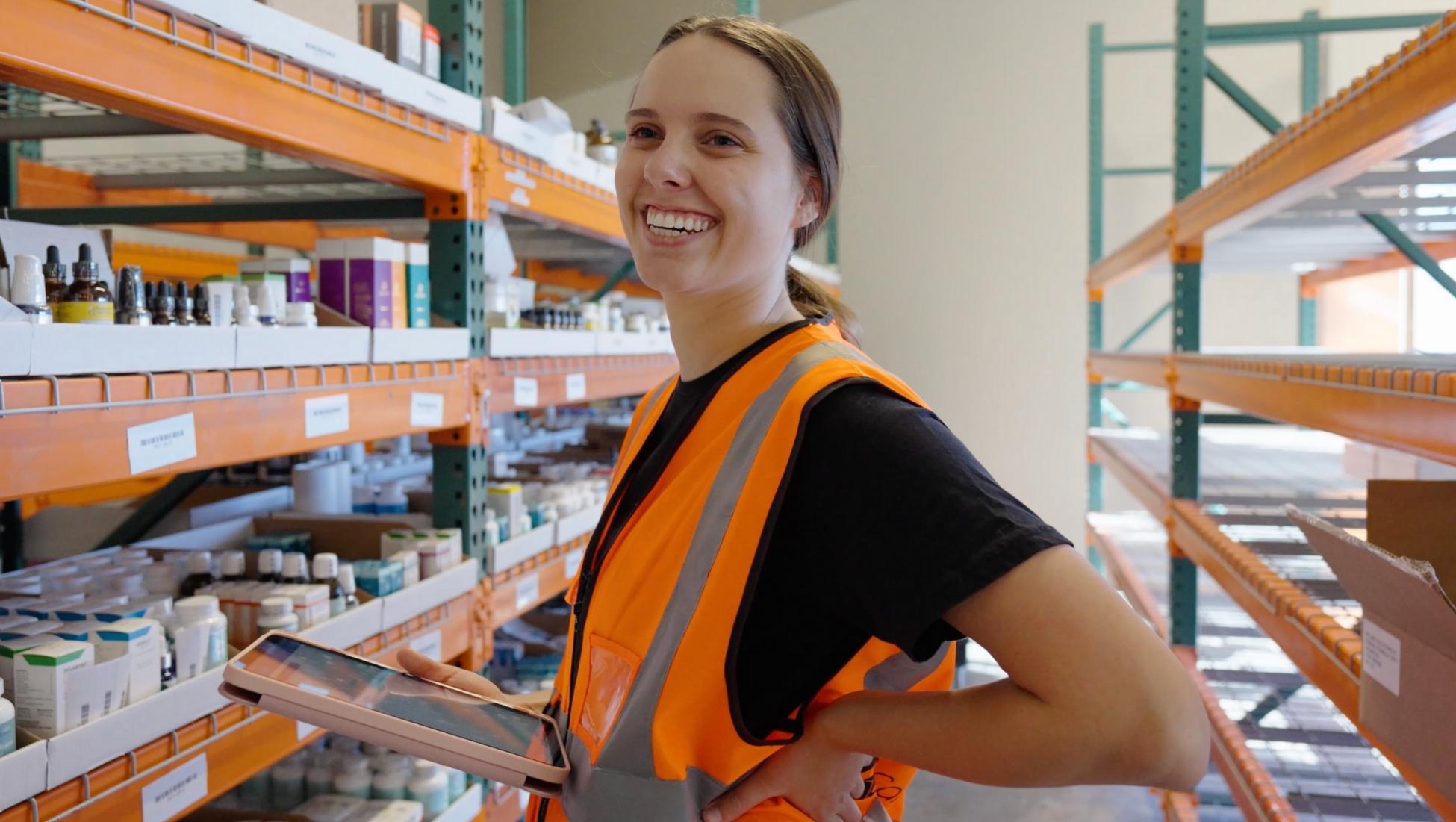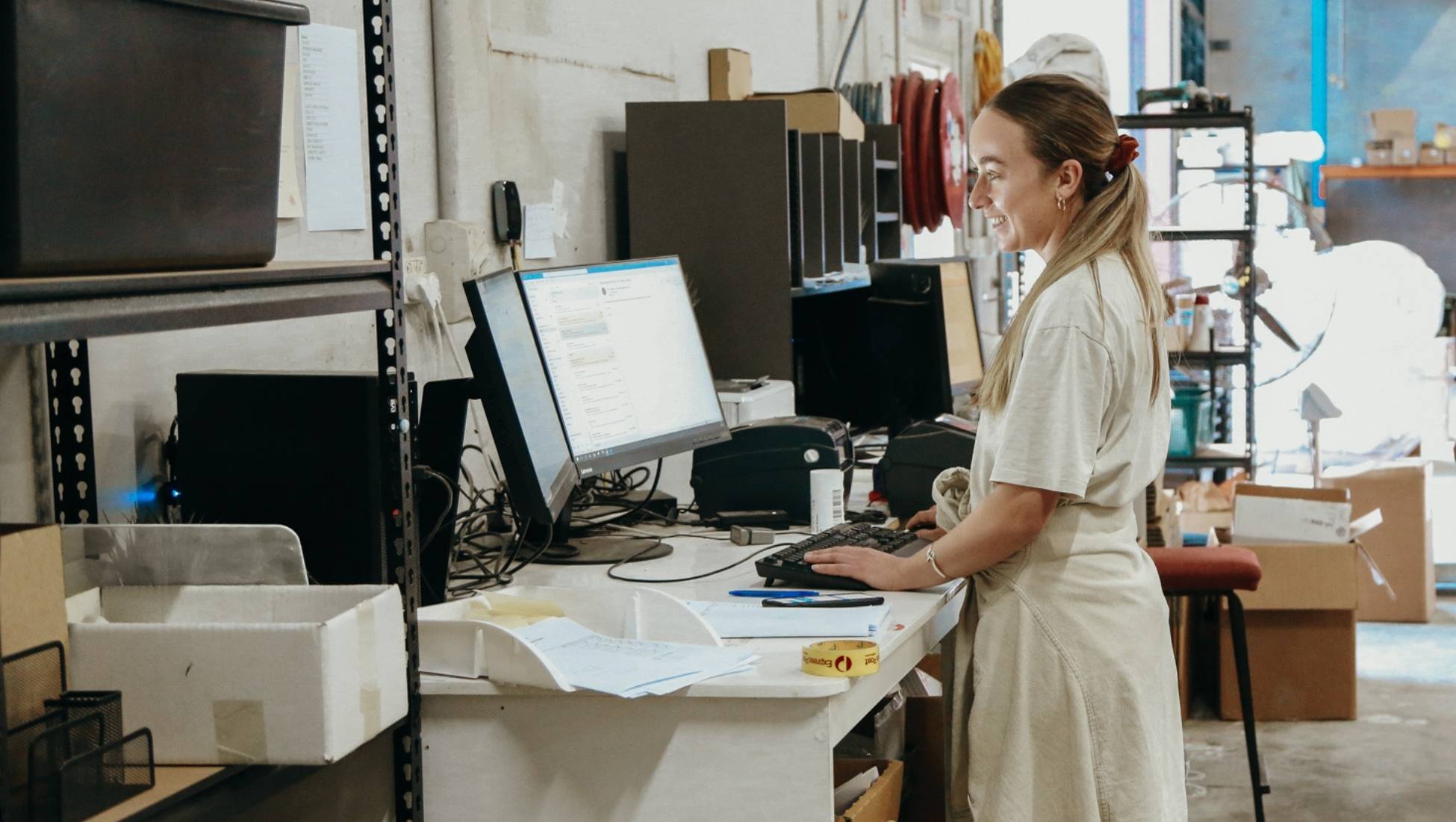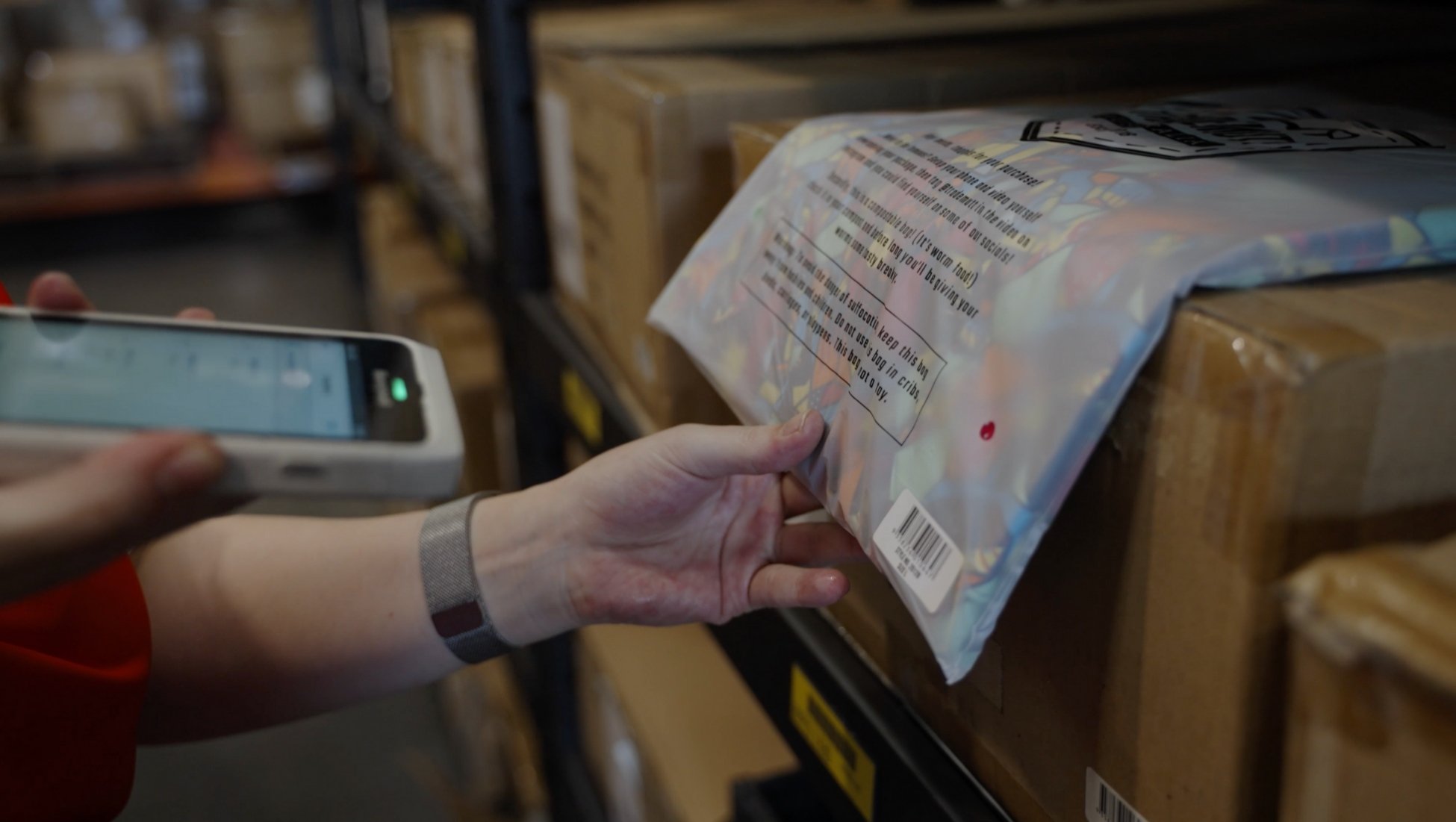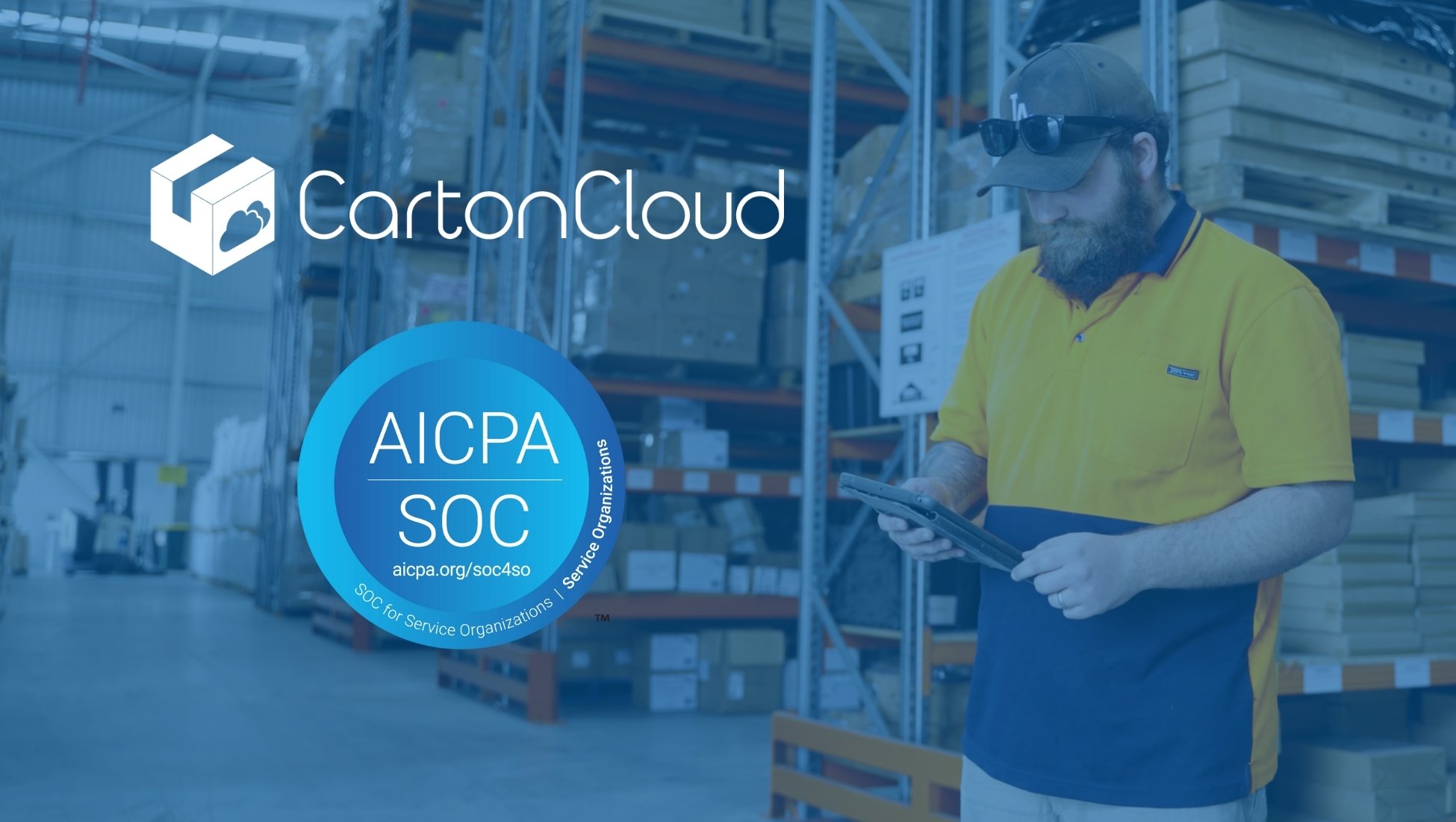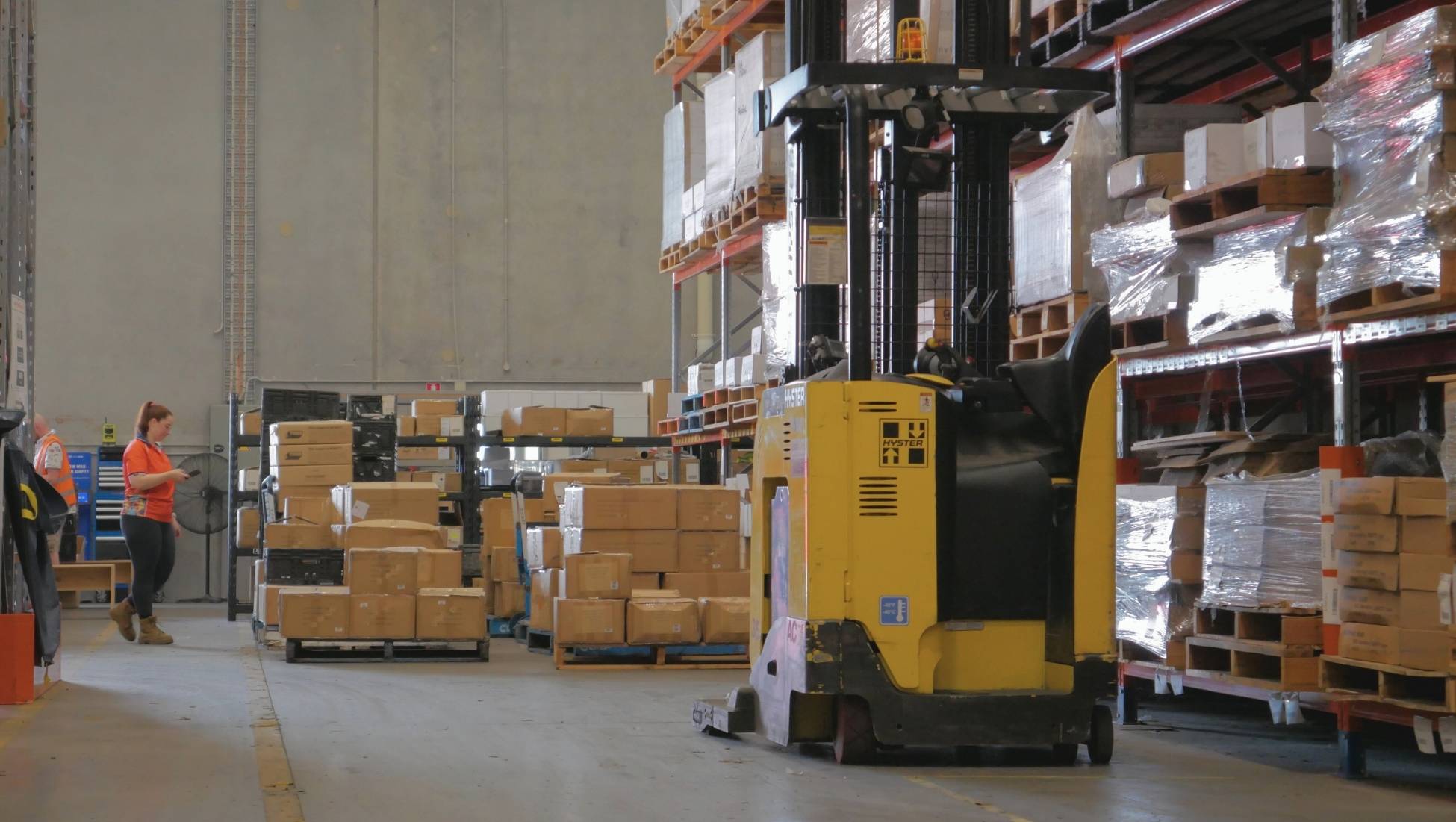Your Top E-commerce Fulfillment Questions Answered by Our Industry Experts

Got some burning questions about 3PL e-commerce fulfillment? 🔥 Well, we’ve got answers!
Our CartonCloud experts are here to pull back the curtain on e-commerce and answer some of the most common questions 3PLs are asking as they step into the world of e-com.
TL;DR: In this blog, CartonCloud experts Olivia Trankina (North American Operations Manager) and Javier Hernandez (Implementations Consultant) share their top tips and expert advice to help you take on new e-commerce clients with confidence and unlock new revenue for your business.
Watch the full webinar here!
Q1. What is the best practice to capture rates for custom packaging and other white glove services in e-commerce fulfillment?
Javier: “When it comes to invoicing for e-commerce, it’s important to automate as much as possible. For example, you might have a flat order fee, a per-pick fee, a per-carton fee, or even a per-pallet fee. The key is to let the system track all of that automatically, so you’re generating revenue per order and keeping everything in one place.
In CartonCloud, each order essentially builds its own charge, and depending on your charging scheme — whether that’s daily, weekly, or monthly — the system consolidates everything for you. It aggregates and sums the totals, giving you a clear, organized report at the end of each invoicing period.
This way, you’re not constantly doing ad hoc or manual billing for extra services. If there are occasional value-added services or unique requests, those can still be logged separately. Overall, the goal is to have the system handle it all automatically — so it becomes second nature and you can simply review it at the end of the month.”
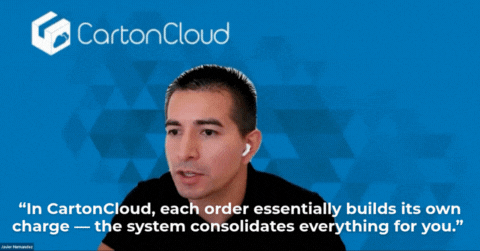
Q2. How can I deliver customer (clients of our 3PL) visibility of their orders & reports within our WMS?
Javier: “Your e-commerce customers can see their orders and reports in real-time directly from CartonCloud’s customer portal.
In CartonCloud, your customers have the ability to log in, view their own inventory, check order statuses, and even reorder stock themselves, eliminating the need for your 3PL to answer those day-to-day questions like, ‘How many pallets are there?’ or ‘Are we out of stock on this?’ — your customers can simply log in and find the answer themselves.
CartonCloud also offers push notifications, giving your customers even greater visibility into their orders, allowing customers to be automatically notified when sales orders ship or when inbound orders arrive and are verified by warehouse staff.”
See how 3PLs like C&C Warehouse use CartonCloud’s customer portal to give their customers greater visibility here.
Q3. Do you have any recommendations for best practice around warehouse location set up for e-commerce fulfilment?
Olivia: “When it comes to warehouse locations set up for e-commerce fulfillment, you need to take into account the products that you are going to be handing. E-commerce products are often much smaller — things like t-shirts or other apparel that fit in small boxes. In these cases, it usually doesn’t make sense to pick directly from pallets.
What we see with our highest-volume customers is the use of designated pick locations (smaller picking bins or shelving areas) where cartons are broken down and loose stock is kept accessible. This set up dramatically reduces pick times since items are already exposed and easy to grab.
However, with smaller bins, you’ll need to regularly backfill or replenish them because they can only hold so much stock. That’s where warehouse replenishment comes in. This process can work in different ways, but it often relies on minimum and maximum thresholds.
For example, a bin might have a maximum of 100 units and a minimum of 10. When stock drops below 10, the system automatically alerts staff to pick 90 units from a reserve location to top it back up. This keeps pickers efficient while introducing a replenishment role that may be new to some operations.”
Find out more on how to optimize your warehouse for multi-channel e-commerce here.
Q4. What are the most common integrations you see 3PLs needing for e-com clients?
Olivia: “The most common integrations we see 3PLs needing for e-com clients are Shopify, WooCommerce, and Amazon. It’s very common for each e-commerce customer to use more than one storefront to receive orders, and have multiple orders coming in across from Wix, Etsy, eBay, Walmart, and Shopify.”
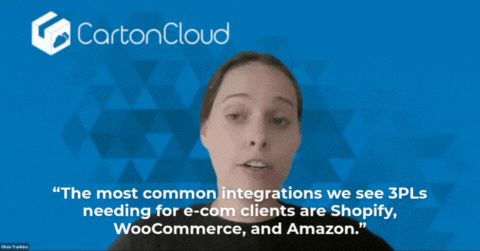
Q5. How do you connect a WMS to online storefronts, to automate orders into the system?
Javier: “In CartonCloud, there are a few different ways to bring orders into our WMS from online storefronts to automate orders.
- The simplest is a manual process, where either the customer or the warehouse team can enter the order directly.
- We also support CSV uploads — what we call ‘parsers.’ Customers can fill out an Excel template and either upload it into the system or email it in, and the system will automatically process and import the data.
- For more established or legacy systems, we also support EDI connectivity, allowing seamless order transfers between systems.
- And finally, we have an open API, which provides direct integrations with online storefronts like Shopify. As soon as an order is placed in a customer’s Shopify store, it automatically flows into our system. Once the order is processed and shipped, CartonCloud updates the status in both systems and sends the shipping notification to the end customer.”
Learn more about how to automate your online orders using integrations here.
Q6. How can 3PLs improve e-commerce order fulfillment process for faster fulfillment?
Olivia: “There are several ways 3PLs can improve their e-commerce order fulfillment process. First, set up your warehouse to support speed and efficiency. This means creating a reserve storage zone and dedicated upfront pick locations for your fast-moving stock, so your pickers can take efficient routes through the warehouse without unnecessary travel.
Just as important is choosing the right picking tactic for each scenario. We see a range of order types — some customers have lots of identical single-item orders, single-item orders of different SKUs, and some orders containing multiple items from different locations.
It’s important to adapt your picking process to fit each case:
- For large batches of identical orders, bulk picking lets you move quickly and process many orders at once with maximum efficiency.
- For days when you have lots of different single-item orders, use a split pick and pack wave. Although you may need to go to different locations, you can at least make sure that your picker is going to an area where that product type is stored or zoned so they’re able to do a bunch of quick picks all from the same area.
- For complex, multi-item orders, the Pick to Tote process keeps everything organized. As you move through the warehouse, assign items for each order to its own tote or bin — so when it’s time to pack, all the right products are already grouped together, which streamlines both packing and labeling.
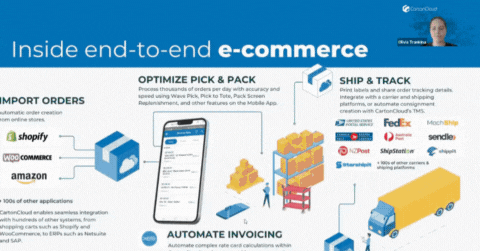
Watch how 3PLs like Core Logistics streamline their e-commerce workflow from start to finish below!
Q7. How can I manage my 3PL e-commerce fulfillment during the holiday season/peak sales season?
Olivia: “Efficiently managing your e-commerce fulfillment during the holiday season is all about being able to pick and pack high-volumes of orders with accuracy and making sure your orders are shipped out on time.
You will most likely be dealing with multi-item orders, which means you need to pick from multiple locations while making sure the different items for those orders are paired together. What we will usually employ when we see this is a Pick to Tote process, which uses a trolley and some bins each with their own labels. Typically, we'll see trolleys of 10 to 12 totes depending on the size of the SKUs that you're handling.
Using Pick to Tote, you’ll be directed around the warehouse in a logical flow, while assigning the orders to the bins, ensuring all of that organization is done at the picking stage. By the time you get over to packing, it's very easy because you can essentially scan that bin, transfer it to a carton, print your label, and move on.”
Check out how to use CartonCloud’s Pick to Tote and Pack Screen in this quick warehouse tutorial.
Key Takeaways for 3PL e-commerce fulfillment, from our industry experts:
- It’s important to automate your order entry and invoicing process to handle high order volumes efficiently so you can scale up without increasing your admin workload.
- Integrate your WMS directly with storefronts like Shopify so your clients always have real-time access to order status, inventory, and tracking.
- For faster, more accurate fulfillment, make sure to use the right pick and pack workflows depending on your order mix.
Want to know more?
If you have any more questions, our expert team is here to help. Reach out to our support team, or to see the software in action, book your free demo today!
For even more expert tips, check out our free Smooth Operators Playbook for a step-by-step guide to getting started with 3PL e-commerce with ease.
%20(1).gif)
Subscribe to CartonCloud


